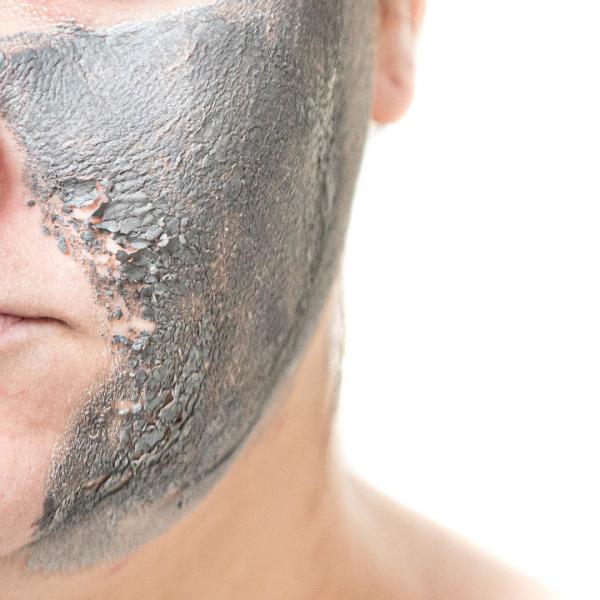Do you find that you are constantly experiencing dry, flaky and tight skin? Or maybe you have oily skin but still experience tightness, inflammation and dry patches on your skin? All that tightness, dryness, and flakiness can only mean one thing--dry/combination skin, right? But with the symptoms of both dry and dehydrated skin being very similar, it is easy to interchange the two terms. Well, I am here to tell you that your skin could actually just be dehydrated. So what is the difference and how do you tell? With these few easy traits and tips to differentiate the two, you'll be a skin expert in no time!
One is a Skin Condition and the Other a Skin Typ
The vast difference between these two terms is that dry skin is actually a skin type and dehydrated skin is a skin condition. Skin types are what we are born with and are all contributed to genetics. There are four common skin types; normal, dry, oily and combination. A skin condition is something you develop overtime. It can be due to the environment such as temperature, harsh weather; and also diet, stress, and lack of sleep can contribute to the development of a skin condition. Unfortunately, you can not get rid of skin types, but you can help alleviate that uncomfortable feeling. Good news is, you can get rid of most skin conditions with the proper understanding and products.
Dry Skin Lacks Oil
When our skin is dry we actually lack oil and lipids within the skin barrier. There is little to no oil production which causes all those not so fun side effects; flaky skin, dryness and that tight, uncomfortable feeling. With dry skin you will also notice that your skin takes a lot longer to absorb products.
Dehydrated Skin Lacks Moisture
Since dry skin is lacking the necessary oil production, it's important to use products that infuse the skin with nourishing ingredients such as hyaluronic acid, panthenol, shea butter, glycerin and ceramides. Include facial oils into your routine such as; jojoba, argan and rosehip oil. *Hint* Try our new Hydra-Repair Super Moisturizer to help combat dry skin! Avoid harsh cleansers such as a foaming cleanser as foaming cleansers tend to strip our skin barrier of its natural oils. Instead, opt for a cream or milk cleanser. These will help to infuse moisture and nutrients into the skin while cleansing.
Sleep with a humidifier on. Not only will you not wake up with a dry, scratchy throat and dry eyes, but your skin will also feel hydrated and happy!
How to Help Dehydrated Skin
Exfoliate! Integrating AHAs and BHAs will also help rid the skin of dead skin cells and the surface layer helping other hydrating products to absorb better. Be cautious when first incorporating exfoliation into your skin routine. Avoid harsh physical exfoliators such as scrubs, and start with ingredients such as lactic and glycolic acid. Retinol is also a key ingredient that will help increase your skin's cell turnover revealing hydrated, glowy skin! Skin tip: Check out our glycolic peels that are enhanced with retinol and green tea so your skin is left gently exfoliated!
Exfoliation Isn’t Just for Your Face!
We all know that to help dry and/or dehydrated skin, that exfoliation is key. Exfoliation removes dead skin cells on the surface layer of our skin and helps products to absorb into the skin more effectively. Our lips, hands, knees and elbows are the top areas on the body that experience dryness and should be exfoliated just like your face. So if you fall victim to even drier skin in the winter, then add our Gly + Sal Exfoliating Body Lotion into your routine so that you are making sure to exfoliate areas other than your face. Our whole body needs exfoliation leaving us feeling smooth all year long.
Dry Skin Affects More Than Just Our Face
During the winter time we tend to experience an increase in dry, chapped hands, lips and sometimes our body. Add a pandemic on top of that and you have constant irritation, dryness and rough skin. Since we are all washing our hands more frequently and applying hand sanitizer religiously throughout the day, it's no wonder our skin is experiencing discomfort. And with an increase in disinfectants, our skin is being exposed to harsh chemicals that can also contribute to dry skin and our skin is undoubtedly feeling the effects. When looking for a chapstick find one that contains castor seed oil, ceramides, dimethicone or mineral oil. For hands, moisturizers with occlusives such as petroleum jelly, mineral oil, shea butter and lanolin, will help to soothe itchy, inflamed dry skin.
Next time your skin is feeling dry, remember it could just be your skin letting you know it is dehydrated. So grab some water, drink up and give your skin the much needed moisture it is craving!
References:
https://www.byrdie.com/dehydrated-or-dry-skin
https://www.byrdie.com/dry-skin-oil-production
https://www.verywellhealth.com/the-best-moisturizing-ingredients-for-dry-chapped-hands-2223305
https://www.aad.org/public/everyday-care/skin-care-basics/dry/heal-dry-chapped-lips

